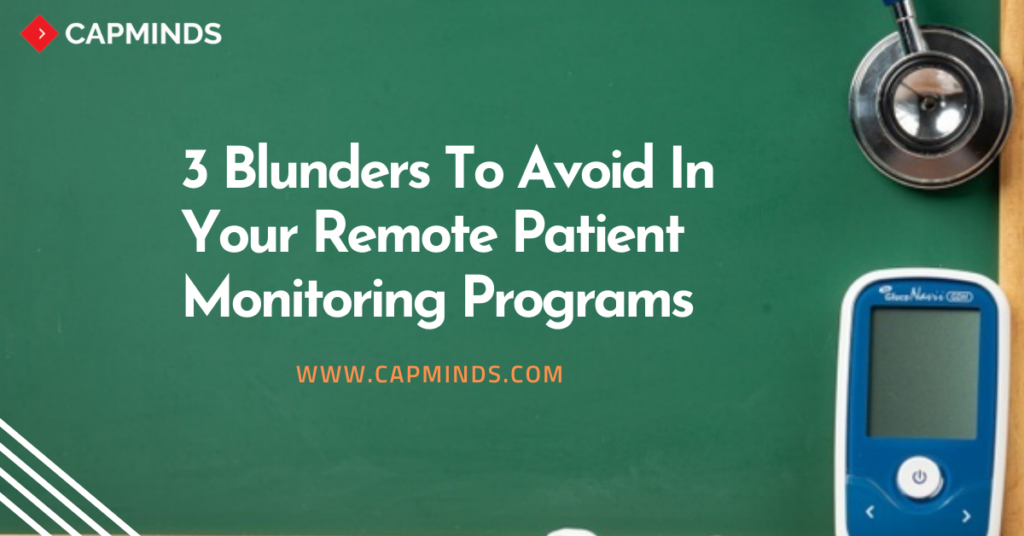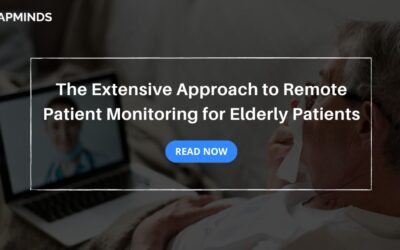3 Blunders To Avoid In Your Remote Patient Monitoring Programs
As the
healthcare providers are looking for the best ways to deliver quality
healthcare on time for patients, while improving productivity – remote patient
monitoring continues to grow in 2021 and the future healthcare environment.
Beyond choosing the best remote patient monitoring service provider, the success lies in various key factors. Have you started implementing RPM for your practice and didn’t get successful results as you expected? Here are the few common mistakes and how you can avoid which helps you grow your practice profitability.
3 Important
Steps To Overcome RPM Challenges
1. Target
The Right Set Of Patients
Choosing the
right set of the patient is one of the biggest RPM challenges. Patient
engagement is the key component for a successful remote patient monitoring
program. If you are targeting patients in the common or wrong set of patients,
then this is the first mistake you need to avoid immediately. If you ask if
there are any key metrics to target the right patients, the answer will be
definitely YES.
How To
Overcome This RPM Challenge?
Before
implementing understand your patients well and make sure:
- Which patients require immediate care?
- Which age group of patients is readily available to adopt RPM service?
- In what ways patients can be served in the best manner?
- Which type of conditions can be effectively treated using remote monitoring?
Most of the
chronic conditions can be effectively managed with the help of remote patient
monitoring services – this may avoid unnecessary clinical visits and offers
more convenient care at reduced costs.
Nearly 86% of all healthcare costs are mostly related to mental health and chronic health conditions. Look for the patients who frequently skipped their regular clinical visits due to traveling and target those people to reduce their challenges in getting healthcare facilities.
RELATED: FUTURE OF REMOTE PATIENT MONITORING IN HEALTHCARE 2021
2. Focus
More On Your Patients Conditions First
Today, most
healthcare practices are concentrating more on technological adoptions like
features in RPM tools to obtain better results rather than concentrating on a
patient’s health condition. If you are following this process for your
practice, then this should be the second biggest mistake of your remote patient
monitoring program.
A successful
RPM implementation focuses more on patient’s conditions. Knowing your patient’s
health condition, medical history, a treatment plan can make a difference
towards remote monitoring adoption.
How To
Overcome This RPM Challenge?
Choosing the best RPM service provider like CapMinds, will help you to deliver care to your patients more easily and conveniently. They will also help to serve specific population groups based on health conditions, location, and other factors.
RELATED: EXPERT’S GUIDE:WHY TO FOCUS ON REMOTE PATIENT MONITORING?
3. Maintain
A secure Communication With Patients
Your remote
patient monitoring solution may offer numerous benefits for you in terms of
profitability and productivity. But if you are not connected with your patients
and staff, then this would be the third mistake of your RPM program. Secure
communication between patients, physicians, and other staff in your practice is
very important for your overall success.
How To
Overcome This RPM Challenge?
As the
implementation of telehealth and remote patient monitoring programs relies on
modern technology, understanding which group of patients are more tech-savvy
can help you to grow your practice. Because they will be more familiar with the
modern devices and they don’t need any kind of training on how to use it. They
will be well known about wearable devices, online portals, online patient
solutions, and other elements that make your work very easier. Patients who
have already made online appointments pay their medical bills online will feel
easier while adopting remote care programs.
Also,
educating your patients about their health conditions and treatment plans helps
them to get a clear view of their overall care. Secure communication can make
sure that the patients are updated on the new program features and keep them
aware of their remote patient monitoring solution. Implement a training program
for your physicians and staff about your RPM program features including
benefits for them and their patients.
Final
Thoughts
As our health system finds it difficult to serve patients outside the clinic or hospital, the emergence of COVID-19 has created a huge opportunity for the adoption of remote patient monitoring. CapMinds offers the best remote patient monitoring services and other telehealth solutions that can help you to effectively implement your remote patient monitoring program and drive better practice growth.
Interested in implementing RPM services for your practice?

 Author: Pandi Paramasivan
Author: Pandi Paramasivan


